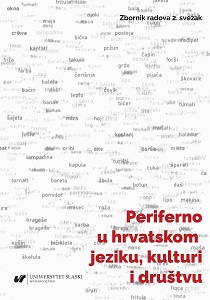Utjecaj interpretacija pojma periferijske umjetnosti Ljube Karamana i Miroslava Krleže na dalmatinsku povijesti umjetnosti
Impact of the Interpretations of a Notion „Peripheral Art“ in the Works of Ljubo Karaman and Miroslav Krleža in Dalmatian Art History
Author(s): Ivana Prijatelj Pavičić
Subject(s): Fine Arts / Performing Arts, Sociology, Croatian Literature, Culture and social structure , History of Art
Published by: Wydawnictwo Uniwersytetu Śląskiego
Keywords: Ljubo Karaman; Miroslav Krleža; the notion of the peripheral art
Summary/Abstract: Although the so-called „Vienna school“ practised an universalist approach to history of arts, their prominent acters like Alois Riegel and Max Dvořák influenced the nationalist ideas among the Central European art historians in the interwar period. An evident example of such an influence is Croatian art historian Ljubo Karaman (1886‒1971) ‒ a Vienna student who studied the art relations between center and periphery from early 1930s on. His thoughts on this topic were collected in his 1963 book Problemi periferijske umjetnosti. O djelovanju domaće sredine u umjetnosti hrvatskih krajeva (Problems of Peripheral Art. On Influence of Local Surrounding on the Art of the Croatian Areas). Colonial character of the Karaman’s definition of the center/periphery relation is clear in his notion that the dissemination and assimilation of the artistic styles is always one-way: from developed center to the province. His definition of „peripheral art“ appeared as a reaction to the works of famous „Vienna school“ scholars from early 20th century (particularly Polish-Austrian art historian Strzygowski). It is based on the idea of external, political and artistic influences in Dalmatia as external forces of artistic exchange.
A prominent writer and encyclopaedist Miroslav Krleža turned upside-down the idea of the artistic transfer from the advanced West toward underdeveloped East/Balkans as a periphery at the edge of civilisation. In his discussion on the Second Congress of writers in Zagreb he promoted the idea of the periphery as a true center. During 1950s, Krleža strongly influenced the formation of a new cultural paradigm, and forging of the new scientific paradigm within art history in Croatia. In her paper, the author explores how texts of the Croatian art-history scholars regarding ancient Dalmatian art were influenced by Karaman’s and Krleža’s ideas and concepts on peripheral, provincial, and border-line art.
- Page Range: 498-510
- Page Count: 13
- Publication Year: 2021
- Language: Croatian
- Content File-PDF

